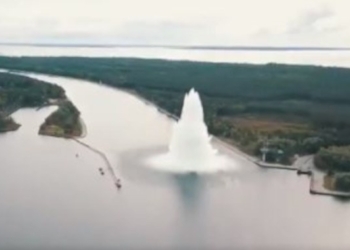A lot has changed in the environmental consulting field over the last ten years. Prominent environmental consultants have taken stock of what the industry looked like ten years ago, and these are some of the observations that they have made:
Although there has been significant growth in the field as a whole, that growth is greatly diminished if you take inflation into account. If you look at some of the biggest consultancy firms across all major countries, you will notice that they have slightly lower numbers of full-time professional consultants than they did ten years ago.
The number of specialists working in the industry has reduced, and the fees that clients pay consultants have also gone down slightly, but the amazing thing is that in the midst of all that, productivity has risen across the industry at large. This is credited to the fact that businesses within the industry are being managed a lot better than they were a decade ago, and that most consultancy firms are focused on delivering quality services.
The industry has become more competitive in the past ten years, which could explain why the fees are lower than they were back then. Competition stems from the fact that clients are looking for the same high-quality services but at a lower cost, so players in the market are forced to become a lot more efficient in their operations.
Global markets have been turbulent over the past ten years, and some of that turbulence has been witnesses in environmental consulting. The environmental consulting business relies on the general state of the economy, so it is not immune to the kind of turbulence that was experienced in the wake of the global financial crisis of 2008.
Despite economic downturns, the environmental consultancy industry has been able to thrive mostly due to a high number of mega-infrastructure projects. Environmental impact assessments are standard practices in most types of projects, and where mega-infrastructure projects are concerned, the demand for consultancy exceeds the supply.
Due to the complexity of mega-infrastructure projects, consultancy firms which initially thought of each other as rivals, have had to partner up in order to take on the workload that comes with such projects. It’s hard to find a consultancy firm that can handle all the environmental work on major projects such as airport expansions, so firms have had to come together to submit joint bids for contracts and to share expertise and responsibilities. Many of these collaborative efforts have been successful.
Another key change is that environmental and sustainability issues have become drastically more important to the public than they were ten years ago. People are more aware of the effects that human activities have on the environment, and they are more conscientious of their own actions. As a result, clients are now more interested in the value of their projects in relation to how those projects impact the environment. In fact, many clients are going beyond the minimum regulatory requirements, and they are willing to pay more to lessen the impact of their projects on the environment. This is a good sign both for the environmental conservation effort and for consultancy businesses. Environmental sustainability is now more central than it was before when it comes to strategic decision-making, both for governments and for private entities.
Another crucial change in the field of environmental consulting is the adaptation of modern digital technologies across the board. Consultants are able to do a lot more than they were able to ten years ago thanks to more advanced mobile devices. It’s now possible to collect a lot more data and to process it a lot faster on your laptop while you are out in the field. Thanks to the increased availability of data, environmental consults can now make rapid and more accurate predictions of environmental impacts of certain projects. Modern technologies also make it easy for several people to collaborate on a single consultancy project, and this has fostered a lot of innovation in the industry.
Looking forward
Based on the review of the past ten years in the environmental consulting industry, we asked Steven Molino the founder and chairman of Molino Stewart Environmental and Natural Hazards Consulting, what important changes he would like to witness in the industry in the next decade. Steven Molino is a 20-year veteran of the environmental consulting industry and a world-renowned expert in his field. To him, the most important thing that professional environmental consultants can do to better the industry is to be more proactive when it comes to sharing information.
Steve Molino believes that environmental reports shouldn’t just be for ongoing projects, but they should also investigate the general state of the environment in various jurisdictions so that certain environmental issues don’t end up getting neglected. To that end, Molino Stewart have been sharing information about flooding in their monthly publication, Floodplain Manager, sharing information about natural hazard issues through their weekly publication This Week in Disaster Resilience, and also have been creating annual State of the Environment Reports for various counties in New South Wales. The State of the environment report are mandatory reporting for local councils here in Australia. “Using our extensive environmental management experience and capabilities, we have prepared State of the Environment Reports for twenty local councils across NSW. To do this, we have established and used an online data collection system to collate and analyse data from the local councils and other sources. The data collection system can be tailored to the suite of environmental indicators that the councils wish to report about. The system enables the comparison of data over several years to identify improving or worsening trends for each environmental indicator”.
Steven Molino’s vision for the next decade is that professionals within his industry will have easier access to shared information so that the whole sector can operate more efficiently.














